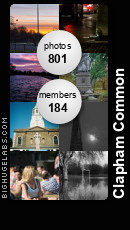
St Peter's, Cambridge has been around for a very long time, but the local community was slightly too ambitious when they came to build it: almost from the start it seems it was too large for the community to afford upkeep. The church was downsized (literally) in the 18th-century, but still fell into decay and neglect. When Jim Ede created Kettle's Yard, he also set about renovating and saving this church. It is now deconsecrated.
The doorway is Norman (11th, early 12th century). The inner column on the left is an 18th-century wooden replacement for the lost original. The church walls were built out of reclaimed rubble - the red bricks visible in the lower right are actually reclaimed roof tiles from ancient Roman buildings in the vicinity - the Roman fortress is nearby.

One can borrow the key to the church from the desk at Kettle's Yard and enter the tiny church.

St Peter's 11th/early 12th--century font has 'mermen' carved in each corner. Not a classic Christian motif; unless perhaps they are referring to fish imagery.
This is apparently the oldest surviving baptismal font in Cambridge.

Close-ups of the font carvings - these have seen almost 1000 years of babies being christened . . .



Jim Ede was a 20th-century aesthete, apparently the first modern art curator at the Tate, and the creator of Kettle's Yard in Cambridge: he transformed four cottages into an extraordinary space; a showcase for his modern art collection. He donated the whole thing to the University of Cambridge, and to this day it remains a remarkable ensemble of classic English craftsmanship and high modernist aesthetics. There is a memorial tablet to him in the church he helped save.

~ Jim Ede, A Way of Life: Kettle’s Yard, 1984

No comments:
Post a Comment